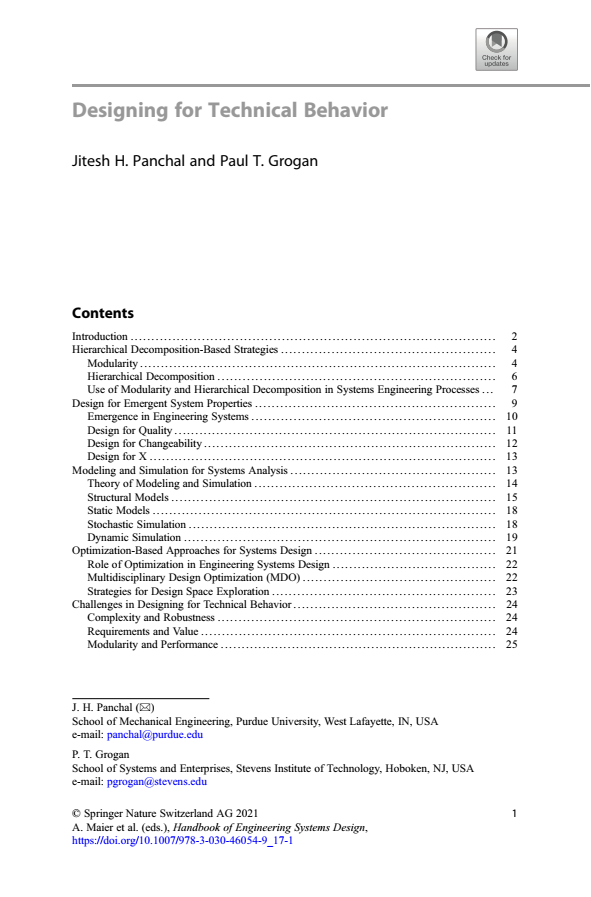A new chapter co-authored by Jitesh Panchal and Paul Grogan appears in Handbook of Engineering Systems Design edited by Anja Maier, Josef Oehmen, and Pieter E. Vermaas.
Designing for Technical Behavior
This chapter focuses on strategies for technical design of engineering systems. The strategies allow designers to manage the complexity arising from the interconnected nature of engineering systems, while achieving both technical and business objectives. The design strategies discussed in the chapter include hierarchical decomposition, modularity, design for emergent behaviors, modeling and simulation, and optimization-based strategies. Hierarchical decomposition forms the basis for traditional top-down systems engineering processes where the overall system is decomposed into quasi-independent modules which can be developed concurrently and integrated into the overall system. While decomposition-based approaches are ideally suited for achieving functional properties of the system, they do not provide guidance for achieving emergent properties. The strategies for design of emergent properties include design for quality, design for changeability, and, more generally, design for X. To support both top-down functional design and design for emergent properties, commonly used modeling and simulation approaches, and optimization-based approaches are discussed. The chapter discusses challenges and trade-offs in designing complex engineering systems for technical behavior, such as complexity vs. robustness, requirements vs. value, modularity vs. performance, and the interactions between social and technical aspects.

